-
CAMP takes VOLTA New York
A group interview with Joanna Ambroz, Hermes Berrío, Seth Ellison, Michael Sylvan Robinson, and Magadela Zych. Hermes Berrios, "Portrait Of Woman Facing Back" (2024). Chinese Ink on Canvas. 11 × 8 in.The CAMP is delighted to be participating in VOLTA New York, September 2024, having participated in our first international art fair at VOLTA Basel earlier this year.Making up Booth 35 are artists Joanna Ambroz, Hermes Berrío, Seth Ellison, Michael Sylvan Robinson, and Magadela Zych. In anticipation for the fair, we asked our artists to answer a few questions.Read on to explore the artists' creative challenges, daily routines, and deep connection to New York City.
Hermes Berrios, "Portrait Of Woman Facing Back" (2024). Chinese Ink on Canvas. 11 × 8 in.The CAMP is delighted to be participating in VOLTA New York, September 2024, having participated in our first international art fair at VOLTA Basel earlier this year.Making up Booth 35 are artists Joanna Ambroz, Hermes Berrío, Seth Ellison, Michael Sylvan Robinson, and Magadela Zych. In anticipation for the fair, we asked our artists to answer a few questions.Read on to explore the artists' creative challenges, daily routines, and deep connection to New York City. -
Artist Spotlight: Julie Peppito
"Since the old things that I acquire for my art are intrinsically nostalgic, the love that people feel for their childhood and past is often a large part of my narratives." We Are in Danger, 2022Master upcyclist and Tulsa-native artist Julie Peppito is in the CAMP Spotlight this month, August 2024. Signature to her work is the candy-crush kaleidoscope of fiber, discarded materials, and paint assembled into intricate, nostalgic pieces. The artist draws inspiration from found objects, using them to create narratives that explore human connection and environmental themes.Read more for a glimpse into Peppito's discussion on connection and process—both among humans and with the Earth—and how it ties in to the narratives she creates.
We Are in Danger, 2022Master upcyclist and Tulsa-native artist Julie Peppito is in the CAMP Spotlight this month, August 2024. Signature to her work is the candy-crush kaleidoscope of fiber, discarded materials, and paint assembled into intricate, nostalgic pieces. The artist draws inspiration from found objects, using them to create narratives that explore human connection and environmental themes.Read more for a glimpse into Peppito's discussion on connection and process—both among humans and with the Earth—and how it ties in to the narratives she creates. -
What is Art? featuring Alan Neider
An insight and process behind the works of fiber artist Alan Neider.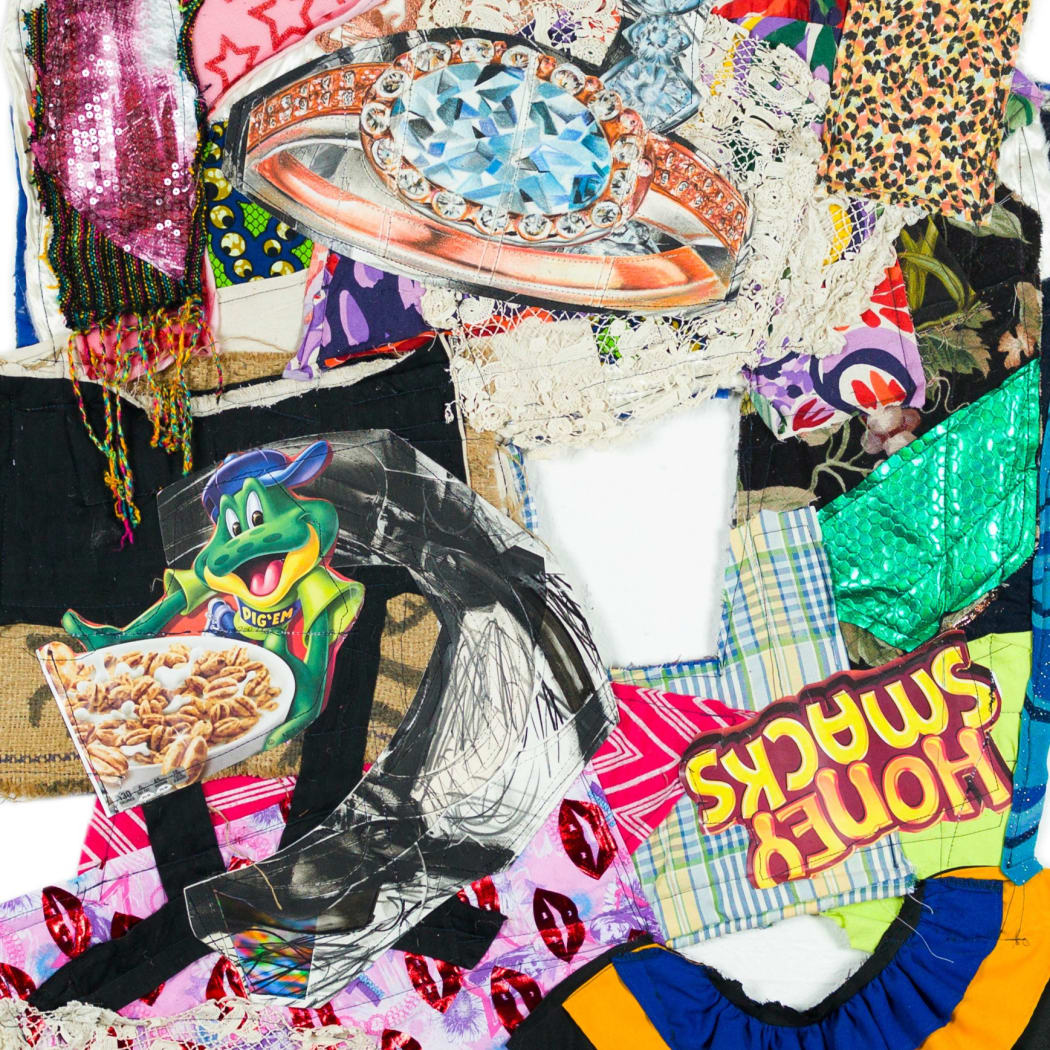
Joining us this time for our latest question with the artist is fiber and mixed media artist Alan Neider, where we ask him the simple question on the surface, but a never easy one to answer: What is Art?
We've gotten a swathe of inspiration from our last artist interview, and how it makes the artist delve into not just what art is to them, but what their art means to others, and so Alan gives his insight on not only this, but what lead to his latest series of work.
-
What is Art? featuring James Akers
A thought provoking discussion on the meaning of art by neon artist James Akers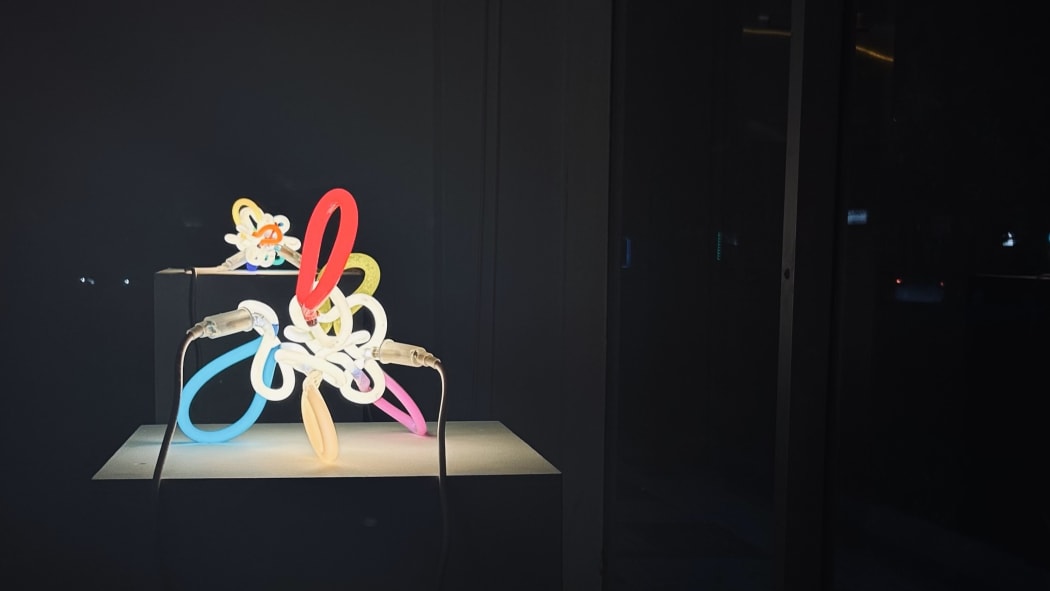 Every exhibition we always like to pose questions to the artists in show, whether it be for artist talks with them or for interviews we post here. And for It's Not That Serious, we did the same, providing the three artists with a simpler question this time: What is art?Well neon artist James Akers did not just give us an answer suitable, he went to full lengths to examine the very nature of the question beyond what even we expected! We want to share his full response, as follows -"On the question "What is Art?"-This question is one with two answers- one is long-winded, and the other short answer is simply, "impossible to define". The problem with the question is in the "IS". Since as an Artist or a musician you are free to do whatever you want, there is usually not a "correct" answer, but rather a series of habits and tendencies that I will attempt to illustrate through examples and metaphors. In the spirit of the Dada movement and in marketing, I shall give an answer that mostly satisfies my own personal opinions on the matter.In defining "Art" I like to make parallels to something everyone can experience - "music". Art, like music, is subject to personal taste. Different people will like different things.There is a push in academia for seriousness, glorifying conceptual weight and often social commentary. Such Art might be seen as all about the idea. These conceptual based academic works are often very personal, eschewing color, with deep, sophisticated, heavy topics and emotions but often with a disregard for the desires and sensibilities of the viewer. I think of these as the "John Cage, Yoko Ono, or Avant-garde Jazz" of the art world.On the other extreme, you also have bright colored resin drips, eye grabbing lines and patterns, chrome finishes and luscious textures. Think of the kind of work you see in 90% of art fairs. The work is like EDM, some pop songs, or house music, drawing you in with a strong surface level attraction and then leaving you with little weight or significance. A song you listen to once or twice, but not an everyday classic. A variation on this theme might be soft, subtle tones, washes of color and mild textures. Think inoffensive hospital art, or landscapes bought en masse from China to fill hotel rooms and cruise ships. I think of these as elevator music, or a streaming services "chill beats" playlist of the Art world. Art designed to liven up a space, but devoid of emotion, or lasting viewer connection.Perhaps yet another classification would be the sheik, well crafted, self aggrandizing works of blue chip artists like Jeff Koons balloon dogs, Alec Monopoly, Kaws action figure sculptures, Warhol prints, or even pieces by Takashi Murakami. While all of these artists do have conceptual underpinnings to their works, their elaborate blue chip sales and fabrication teams work tirelessly to crank out work that ultimately speaks of over commercialization or just flaunts the wealth of the buyer. I think of these artists as the Nikki Minaj, Lil' Wayne, or even Justin Bieber's and Taylor Swift's of the Art world. Work designed to appeal to the masses that usually plays off of time tested themes and desires, wealth, love, breakups, commercialism and money among them.A big component sometimes overlooked by the commercial Art market but is important to my discussion of the "IS" in this question is craft. Craft is more easily definable and while sometimes used interchangeably with art, I strongly believe the two are separate. Craft to me, pertains to human skill and people making things. These things could be physical, like pottery, woodworking, glassblowing, painting or metal casting, or intangible, like programming a computer, musicians playing instruments, a lawyer crafting an argument, a doctor giving advice or an architect laying out a building. A perfectly made wood boat may have little conceptual weight but is indeed a finely crafted object as is a perfectly blown Venetian glass goblet. Both examples of fine handmade objects require skill and time to create, and the process of production may even be enjoyable to their makers or ridiculous in today's contexts. However these designs are often tired and repeating the traditions and techniques passed down from generations of innovation.The well executed drawing on a wall is finely crafted, but the idea that they are precisely instructed by Sol Lewitt's directions make them Art. The perfectly bent and installed neon signs on the wall may be expertly crafted, but it is the colors, patterns and animation sequences designed by Bruce Nauman or Tracey Emin that make them Art. The context in which they were made, the ideas they convey and the viewer's responses all contribute to their "Art" quality.It is important to note that none of these Artists fabricated these works themselves, a tradition that has been going on since the renaissance in Europe. This allows artists to generate ideas and keep their works pristinely crafted. As fallible, impressionable humans with limited attention resources, this allows artists to keep their perspectives fresh. Selfishly, I often enjoy immersing myself in the craft, and allow myself to create as a form of inquiry. Delving deep into the materials and processes I am using, and allowing the tools and techniques to help shape my future work and interests, allowing me to move beyond the scope typical of artist, fabricator relations.The musical equivalent to craft can be seen more apparently. The concert orchestra musician practices tirelessly to play composed music in a group. The sound of vibrating brass and wood will be acoustically more dynamic than the sound of vibrating paper speaker cones, and the composer wouldn't be able to master and simultaneously play all of the instruments at once. The guitar virtuoso might be able to rapidly shred through obscure scales and patterns, even evoking emotion through musical minor, major and 7th chords, but if they cannot write a song, then no one will care- there will be no substance, no conceptual weight. In addition, the abilities of humans, even if well practiced, can be pleasing to the ear, as noted by musicians from Dave Grohl of Nirvana and Foo Fighters to the Beatles and Adele. I would argue that the hand "crafted" nature of these musicians adds to their conceptual weight (circumstances of production).An antithesis to this in music would be the current trend of AI generated music. Engineered to be generic and pleasing to the ear, its novelty and seeming lack of human touch adds to its appeal. Usually, a clever series of prompts or access to training data (music) shapes or "crafts" it's output just as the tuning of a drum machine or the shaping of a 3D printed file.Due to Art's "no rules" nature, there are always artists pushing and expanding these boundaries. Ai Wei Wei for example relies on his skilled studio team to not only fabricate work, but also come up with ideas for his blue chip, global "name brand". While conceptually novel, and interesting, I would argue that this conceptual outsourcing subverts long-standing Western ideals of the "Artist as genius" while simultaneously contributing to and diluting Ai Wei Wei's "brand". I believe that the limited attention span of collectors, and the strength of his brand, will allow his career to continue to flourish.To me, my Artistic interests and tastes lie at a junction between craft, concept, context, and social commentary with a sprinkling of viewer pleasing eye candy. Working off of craft traditions, I am usually object based but will also make installations, performances and interactive works. I subscribe to John Cage's ideals of "two people doing the same thing is one too many" yet I also share the Dada views rejecting authorship and claiming that there are really no new ideas. Like Bruce Nauman, I start to feel like a piece is getting somewhere when I have the feeling that I want to show my friends and those around me. I do plan my sculptures to an extent but often leave room for improvisation and inquiry.As for the context of my work, as a former video game and social media connoisseur, I do enjoy short attention spans. The work fueled, ad driven, rapid pace led me to New York City where my neon bending habit employs me fabricating for artists, sign makers, events, TV, etc. I also love taking things apart, learning how they tick and reverse engineering them for my own purposes. Current interests in advertising, social media, privacy and monetization fuel my current bodies of work.Let's look at my above definition of Art in the context of Kathryn Knudsen's Art. Knudsen, a mother of three, brings traditional associations of fiber crafts and sewing as motherly and women's crafts to the fore. Flowery, feminine pieces such as "Lois" and "Harriet" use these fiber materials to draw you in with their bright, fleshy, hairy colors while pieces like "Miranda" and "Ramona" offer a different, cell-like quality.Knudsen's drawings offer a similar, fiber-esque quality evoking movement with their lines and richly rendered values and tones. Devoid of color, they offer a coolness and subtlety not found in her fiber sculptures.Kathryn Knudsen's works all offer a level of finish and refinement without erasing evidence of the human hand. Wobbles and inconsistencies in the green "feet" and yellow stitching of "Lois" reveal the materiality of the fiber while the laborious stitchings of "Ramona" remind the viewer of the meditative tedium of weaving or knitting. Knudsen uses beads as if they were necklaces in "Ramona" and "Louis" wrapping around and framing the compositions.I would say Knudsen sprinkles in that luscious, eye candy viewers are looking for with timelessly relatable conceptual underpinnings of feminine crafts and motherhood. Pieces like "Lois" may subtly touch on reproductive issues of the current time in the USA without being too over the top as to offend viewers. Her drawings offer the same fibrous, craftiness and richness of tones found in her colorful sculptural pieces, but for a more serious environment. I enjoy Knudsen's work and am excited to be showing with her at CAMP gallery in Miami as a part of the exhibition "It's Not Too Serious". "Response by James AkersTo see the full exhibition that James Akers, Kathryn Knudsen, and Jason Michael Hackenwerth are a part of, click below!
Every exhibition we always like to pose questions to the artists in show, whether it be for artist talks with them or for interviews we post here. And for It's Not That Serious, we did the same, providing the three artists with a simpler question this time: What is art?Well neon artist James Akers did not just give us an answer suitable, he went to full lengths to examine the very nature of the question beyond what even we expected! We want to share his full response, as follows -"On the question "What is Art?"-This question is one with two answers- one is long-winded, and the other short answer is simply, "impossible to define". The problem with the question is in the "IS". Since as an Artist or a musician you are free to do whatever you want, there is usually not a "correct" answer, but rather a series of habits and tendencies that I will attempt to illustrate through examples and metaphors. In the spirit of the Dada movement and in marketing, I shall give an answer that mostly satisfies my own personal opinions on the matter.In defining "Art" I like to make parallels to something everyone can experience - "music". Art, like music, is subject to personal taste. Different people will like different things.There is a push in academia for seriousness, glorifying conceptual weight and often social commentary. Such Art might be seen as all about the idea. These conceptual based academic works are often very personal, eschewing color, with deep, sophisticated, heavy topics and emotions but often with a disregard for the desires and sensibilities of the viewer. I think of these as the "John Cage, Yoko Ono, or Avant-garde Jazz" of the art world.On the other extreme, you also have bright colored resin drips, eye grabbing lines and patterns, chrome finishes and luscious textures. Think of the kind of work you see in 90% of art fairs. The work is like EDM, some pop songs, or house music, drawing you in with a strong surface level attraction and then leaving you with little weight or significance. A song you listen to once or twice, but not an everyday classic. A variation on this theme might be soft, subtle tones, washes of color and mild textures. Think inoffensive hospital art, or landscapes bought en masse from China to fill hotel rooms and cruise ships. I think of these as elevator music, or a streaming services "chill beats" playlist of the Art world. Art designed to liven up a space, but devoid of emotion, or lasting viewer connection.Perhaps yet another classification would be the sheik, well crafted, self aggrandizing works of blue chip artists like Jeff Koons balloon dogs, Alec Monopoly, Kaws action figure sculptures, Warhol prints, or even pieces by Takashi Murakami. While all of these artists do have conceptual underpinnings to their works, their elaborate blue chip sales and fabrication teams work tirelessly to crank out work that ultimately speaks of over commercialization or just flaunts the wealth of the buyer. I think of these artists as the Nikki Minaj, Lil' Wayne, or even Justin Bieber's and Taylor Swift's of the Art world. Work designed to appeal to the masses that usually plays off of time tested themes and desires, wealth, love, breakups, commercialism and money among them.A big component sometimes overlooked by the commercial Art market but is important to my discussion of the "IS" in this question is craft. Craft is more easily definable and while sometimes used interchangeably with art, I strongly believe the two are separate. Craft to me, pertains to human skill and people making things. These things could be physical, like pottery, woodworking, glassblowing, painting or metal casting, or intangible, like programming a computer, musicians playing instruments, a lawyer crafting an argument, a doctor giving advice or an architect laying out a building. A perfectly made wood boat may have little conceptual weight but is indeed a finely crafted object as is a perfectly blown Venetian glass goblet. Both examples of fine handmade objects require skill and time to create, and the process of production may even be enjoyable to their makers or ridiculous in today's contexts. However these designs are often tired and repeating the traditions and techniques passed down from generations of innovation.The well executed drawing on a wall is finely crafted, but the idea that they are precisely instructed by Sol Lewitt's directions make them Art. The perfectly bent and installed neon signs on the wall may be expertly crafted, but it is the colors, patterns and animation sequences designed by Bruce Nauman or Tracey Emin that make them Art. The context in which they were made, the ideas they convey and the viewer's responses all contribute to their "Art" quality.It is important to note that none of these Artists fabricated these works themselves, a tradition that has been going on since the renaissance in Europe. This allows artists to generate ideas and keep their works pristinely crafted. As fallible, impressionable humans with limited attention resources, this allows artists to keep their perspectives fresh. Selfishly, I often enjoy immersing myself in the craft, and allow myself to create as a form of inquiry. Delving deep into the materials and processes I am using, and allowing the tools and techniques to help shape my future work and interests, allowing me to move beyond the scope typical of artist, fabricator relations.The musical equivalent to craft can be seen more apparently. The concert orchestra musician practices tirelessly to play composed music in a group. The sound of vibrating brass and wood will be acoustically more dynamic than the sound of vibrating paper speaker cones, and the composer wouldn't be able to master and simultaneously play all of the instruments at once. The guitar virtuoso might be able to rapidly shred through obscure scales and patterns, even evoking emotion through musical minor, major and 7th chords, but if they cannot write a song, then no one will care- there will be no substance, no conceptual weight. In addition, the abilities of humans, even if well practiced, can be pleasing to the ear, as noted by musicians from Dave Grohl of Nirvana and Foo Fighters to the Beatles and Adele. I would argue that the hand "crafted" nature of these musicians adds to their conceptual weight (circumstances of production).An antithesis to this in music would be the current trend of AI generated music. Engineered to be generic and pleasing to the ear, its novelty and seeming lack of human touch adds to its appeal. Usually, a clever series of prompts or access to training data (music) shapes or "crafts" it's output just as the tuning of a drum machine or the shaping of a 3D printed file.Due to Art's "no rules" nature, there are always artists pushing and expanding these boundaries. Ai Wei Wei for example relies on his skilled studio team to not only fabricate work, but also come up with ideas for his blue chip, global "name brand". While conceptually novel, and interesting, I would argue that this conceptual outsourcing subverts long-standing Western ideals of the "Artist as genius" while simultaneously contributing to and diluting Ai Wei Wei's "brand". I believe that the limited attention span of collectors, and the strength of his brand, will allow his career to continue to flourish.To me, my Artistic interests and tastes lie at a junction between craft, concept, context, and social commentary with a sprinkling of viewer pleasing eye candy. Working off of craft traditions, I am usually object based but will also make installations, performances and interactive works. I subscribe to John Cage's ideals of "two people doing the same thing is one too many" yet I also share the Dada views rejecting authorship and claiming that there are really no new ideas. Like Bruce Nauman, I start to feel like a piece is getting somewhere when I have the feeling that I want to show my friends and those around me. I do plan my sculptures to an extent but often leave room for improvisation and inquiry.As for the context of my work, as a former video game and social media connoisseur, I do enjoy short attention spans. The work fueled, ad driven, rapid pace led me to New York City where my neon bending habit employs me fabricating for artists, sign makers, events, TV, etc. I also love taking things apart, learning how they tick and reverse engineering them for my own purposes. Current interests in advertising, social media, privacy and monetization fuel my current bodies of work.Let's look at my above definition of Art in the context of Kathryn Knudsen's Art. Knudsen, a mother of three, brings traditional associations of fiber crafts and sewing as motherly and women's crafts to the fore. Flowery, feminine pieces such as "Lois" and "Harriet" use these fiber materials to draw you in with their bright, fleshy, hairy colors while pieces like "Miranda" and "Ramona" offer a different, cell-like quality.Knudsen's drawings offer a similar, fiber-esque quality evoking movement with their lines and richly rendered values and tones. Devoid of color, they offer a coolness and subtlety not found in her fiber sculptures.Kathryn Knudsen's works all offer a level of finish and refinement without erasing evidence of the human hand. Wobbles and inconsistencies in the green "feet" and yellow stitching of "Lois" reveal the materiality of the fiber while the laborious stitchings of "Ramona" remind the viewer of the meditative tedium of weaving or knitting. Knudsen uses beads as if they were necklaces in "Ramona" and "Louis" wrapping around and framing the compositions.I would say Knudsen sprinkles in that luscious, eye candy viewers are looking for with timelessly relatable conceptual underpinnings of feminine crafts and motherhood. Pieces like "Lois" may subtly touch on reproductive issues of the current time in the USA without being too over the top as to offend viewers. Her drawings offer the same fibrous, craftiness and richness of tones found in her colorful sculptural pieces, but for a more serious environment. I enjoy Knudsen's work and am excited to be showing with her at CAMP gallery in Miami as a part of the exhibition "It's Not Too Serious". "Response by James AkersTo see the full exhibition that James Akers, Kathryn Knudsen, and Jason Michael Hackenwerth are a part of, click below! -
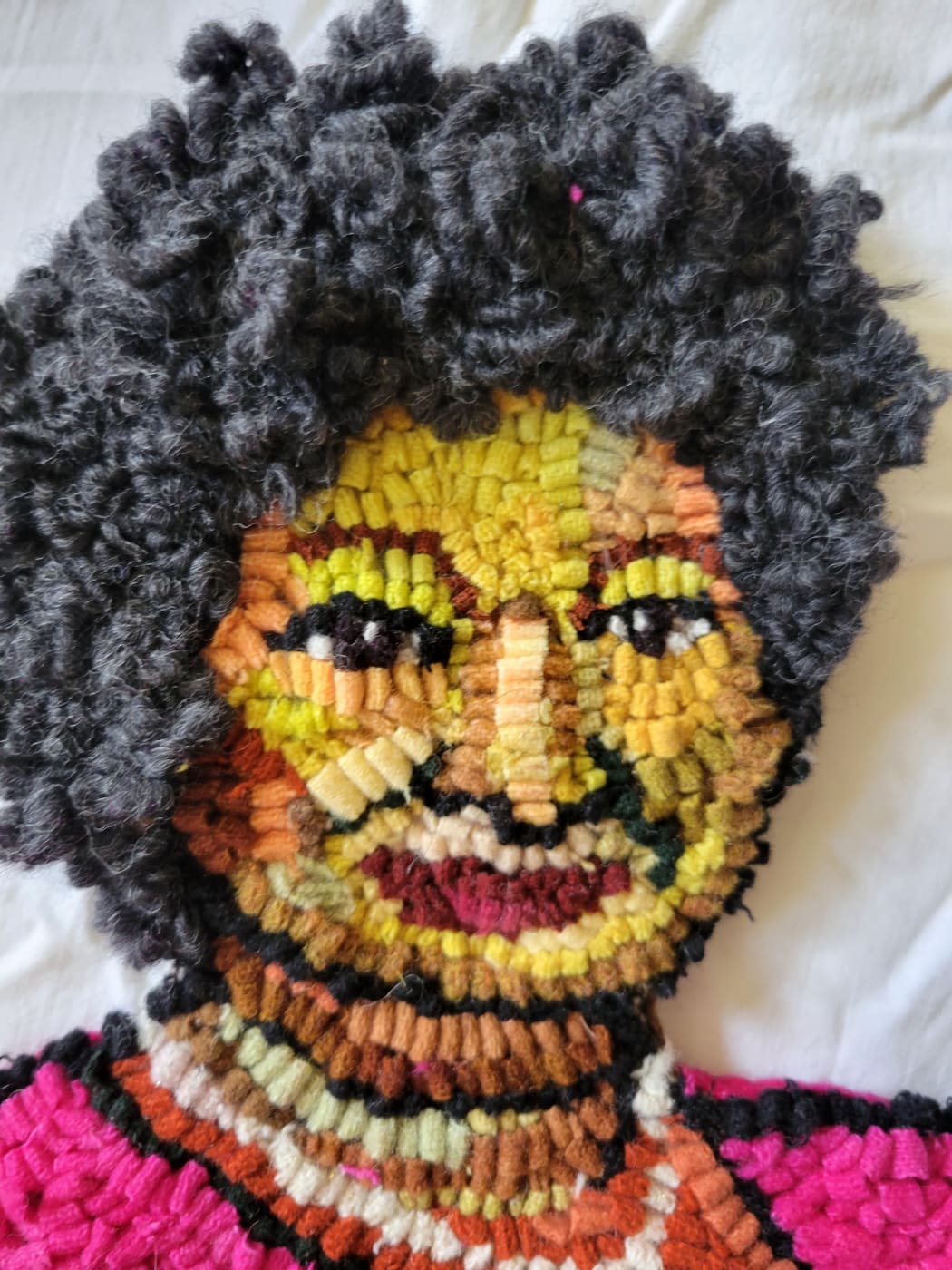 As the exhibition This is Not a Doll's House continues in our North Miami space, we wanted to give the oppurtunity to shed some light on the finer details you might have missed out on with each artists work. Their inspirations, the analysis of the original Ibsen play, and their reactions to an ever-changing modern society norm all have major influences on their art, and that gives us great reasoning to prod their minds for the real reasons behind the Doll's House.This is part three of our interview series, if you'd like to go back to read the answers some of the artists gave in part one, CLICK HERE.
As the exhibition This is Not a Doll's House continues in our North Miami space, we wanted to give the oppurtunity to shed some light on the finer details you might have missed out on with each artists work. Their inspirations, the analysis of the original Ibsen play, and their reactions to an ever-changing modern society norm all have major influences on their art, and that gives us great reasoning to prod their minds for the real reasons behind the Doll's House.This is part three of our interview series, if you'd like to go back to read the answers some of the artists gave in part one, CLICK HERE. -
Artist of the Month: Sonya Revell
"It is important to be curious, to explore, to go down rabbit holes, to day dream, but also to be gentle with yourself." Miami-based photographer, Sonya Revell, is The CAMP’s Artist of the Month for August 2023. Her Award winning series, Queef Latina Stars in Cabana Fever shown as part of our SCOPE 2021 booth features a fanciful drag fairytale starring the iconic local Drag Queen, Queef Latina. This series highlights the joy and fantasy consistent throughout Revell’s work, displayed boldly in scenes of dazzling glamour and colorful extravagance, and this oppurtunity gives us a moment to question and reflect on some of her thoughts on the artistic process as a photographer.Is there an artist that you feel inspired you to become an artist?Tim Burton’s movies made a huge impact on me as a child and as a latch-key kid in the 1990s, I was heavily influenced by pop culture, MTV, and music videos. Later, in college, I discovered and was inspired by photographers like David LaChapelle, Philippe Halsman, Floria Sigismondi, and Rodney Smith.
Miami-based photographer, Sonya Revell, is The CAMP’s Artist of the Month for August 2023. Her Award winning series, Queef Latina Stars in Cabana Fever shown as part of our SCOPE 2021 booth features a fanciful drag fairytale starring the iconic local Drag Queen, Queef Latina. This series highlights the joy and fantasy consistent throughout Revell’s work, displayed boldly in scenes of dazzling glamour and colorful extravagance, and this oppurtunity gives us a moment to question and reflect on some of her thoughts on the artistic process as a photographer.Is there an artist that you feel inspired you to become an artist?Tim Burton’s movies made a huge impact on me as a child and as a latch-key kid in the 1990s, I was heavily influenced by pop culture, MTV, and music videos. Later, in college, I discovered and was inspired by photographers like David LaChapelle, Philippe Halsman, Floria Sigismondi, and Rodney Smith. Pictured above; Queef Latina in Baby Velvet, 2019When did you know that you were an artist?I don’t think there was a definitive moment, I just always knew I enjoyed the creative process and using my imagination. As an only child (until the age of 18) with two working parents, I often had to entertain myself and used creativity as a form of escapism.Do you have a routine when creating art? What does your process look like?To generate new ideas, I have to allow myself to day dream and let my mind wander. This is an important part of my process. Once I have a concept and I’ve let it simmer a bit, I try to pinpoint the best location, type of lighting, subject, hair/ makeup, and props that would help bring the idea to life. During the actual image-making process I try not to box myself in, but rather allow myself to experiment and play.What are your biggest takeaways from your process?Allow your mind to wander. Boredom can actually be a good thing. Be curious. Find topics that interest you and go down rabbit holes. Explore and go on adventures. All of these help breed interesting ideas.
Pictured above; Queef Latina in Baby Velvet, 2019When did you know that you were an artist?I don’t think there was a definitive moment, I just always knew I enjoyed the creative process and using my imagination. As an only child (until the age of 18) with two working parents, I often had to entertain myself and used creativity as a form of escapism.Do you have a routine when creating art? What does your process look like?To generate new ideas, I have to allow myself to day dream and let my mind wander. This is an important part of my process. Once I have a concept and I’ve let it simmer a bit, I try to pinpoint the best location, type of lighting, subject, hair/ makeup, and props that would help bring the idea to life. During the actual image-making process I try not to box myself in, but rather allow myself to experiment and play.What are your biggest takeaways from your process?Allow your mind to wander. Boredom can actually be a good thing. Be curious. Find topics that interest you and go down rabbit holes. Explore and go on adventures. All of these help breed interesting ideas. Pictured above; Queef Latina in Morning Glory, 2019What is the most important thing you have learned about being an artist?It is important to be curious, to explore, to go down rabbit holes, to day dream, but also to be gentle with yourself. For me, creativity can be quite cyclical. I don’t always feel creative and that’s ok. I don’t do my best work when I try to force it. But if I’m feeling inspired it’s almost like a compulsion to create. I have to get it out.Which is your favorite museum/art space and why?The City Museum in St. Louis, MO (where I went to college) is by far my favorite art space. Sometimes museums can feel too sterile and the art feels unapproachable. What I love about the City Museum is how interactive the space is and that it demonstrates that anything can be made into art.
Pictured above; Queef Latina in Morning Glory, 2019What is the most important thing you have learned about being an artist?It is important to be curious, to explore, to go down rabbit holes, to day dream, but also to be gentle with yourself. For me, creativity can be quite cyclical. I don’t always feel creative and that’s ok. I don’t do my best work when I try to force it. But if I’m feeling inspired it’s almost like a compulsion to create. I have to get it out.Which is your favorite museum/art space and why?The City Museum in St. Louis, MO (where I went to college) is by far my favorite art space. Sometimes museums can feel too sterile and the art feels unapproachable. What I love about the City Museum is how interactive the space is and that it demonstrates that anything can be made into art.
What do you want the viewer to gain when encountering your work?
Generally I want the viewer to walk away from my work feeling curious, dazzled, inspired, and maybe just a little lighter on their feet.
To see Sonya's full catalog of works, click here to view the entire selection on Artsy
-
Jac Lahav Is A Great American
"I want to show that it's possible to both celebrate and question America."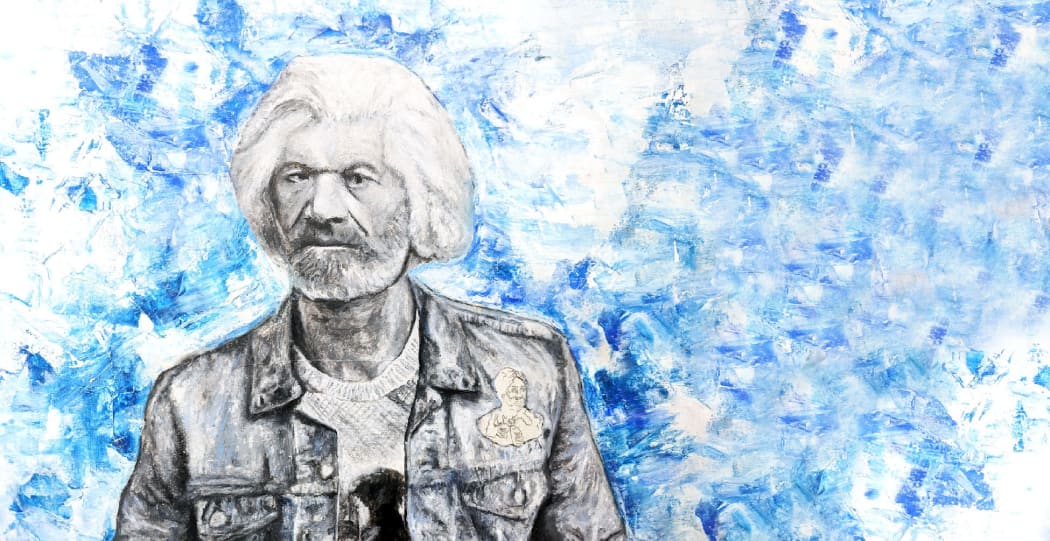 Detail from “The Lion of Anacostia (Frederick Douglass),” 2022. Oil On Canvas. 80 x 32 x 2 in."The Great Americans” is a visually compelling and thought-provoking group of monumental paintings by artist Jac Lahav that examine the notion of "greatness" within American culture. Through a unique juxtaposition of iconic and lesser-known figures, Lahav challenges viewers to interrogate their understanding of what constitutes a "great" American.Lahav's work challenges the viewer to move beyond recognizable faces and surface-level narratives, encouraging a deep and nuanced exploration of our culture and ourselves. This approach to art, the intellectual and emotional depth, sets "The Great Americans Series" apart, positioning it as an enduring contribution to contemporary American art. It is on view at The Slater Memorial Art Museum until September 2023.
Detail from “The Lion of Anacostia (Frederick Douglass),” 2022. Oil On Canvas. 80 x 32 x 2 in."The Great Americans” is a visually compelling and thought-provoking group of monumental paintings by artist Jac Lahav that examine the notion of "greatness" within American culture. Through a unique juxtaposition of iconic and lesser-known figures, Lahav challenges viewers to interrogate their understanding of what constitutes a "great" American.Lahav's work challenges the viewer to move beyond recognizable faces and surface-level narratives, encouraging a deep and nuanced exploration of our culture and ourselves. This approach to art, the intellectual and emotional depth, sets "The Great Americans Series" apart, positioning it as an enduring contribution to contemporary American art. It is on view at The Slater Memorial Art Museum until September 2023. -
Artist of the Month: Ziesook You
A sit-down discussion and look at works by May's artist of the month, Ziesook You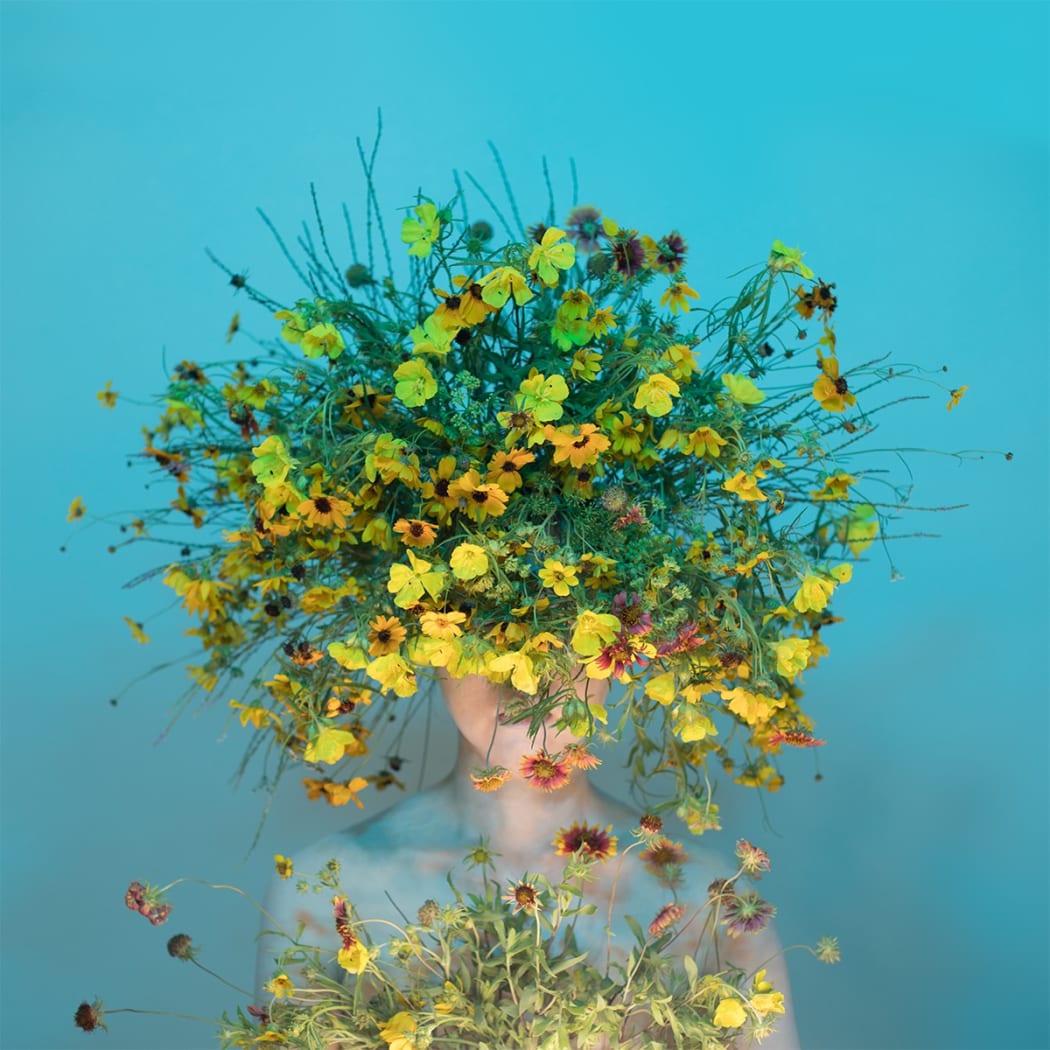 The CAMP is pleased to present and feature for our May artist of the month, Korean artist Ziesook You, a more recent arrival into our collective roster. We wanted to be able to get a more in depth look at the inspiration and creation process that Ziesook takes into her transformative floral arrangements, taking a spin on traditional portraiture and the reasoning behind the multi-faceted and layered photographs shes made her own.
The CAMP is pleased to present and feature for our May artist of the month, Korean artist Ziesook You, a more recent arrival into our collective roster. We wanted to be able to get a more in depth look at the inspiration and creation process that Ziesook takes into her transformative floral arrangements, taking a spin on traditional portraiture and the reasoning behind the multi-faceted and layered photographs shes made her own. -
In Conversation with Julie Peppito
The CAMP Gallery's final Artist of the Month in 2022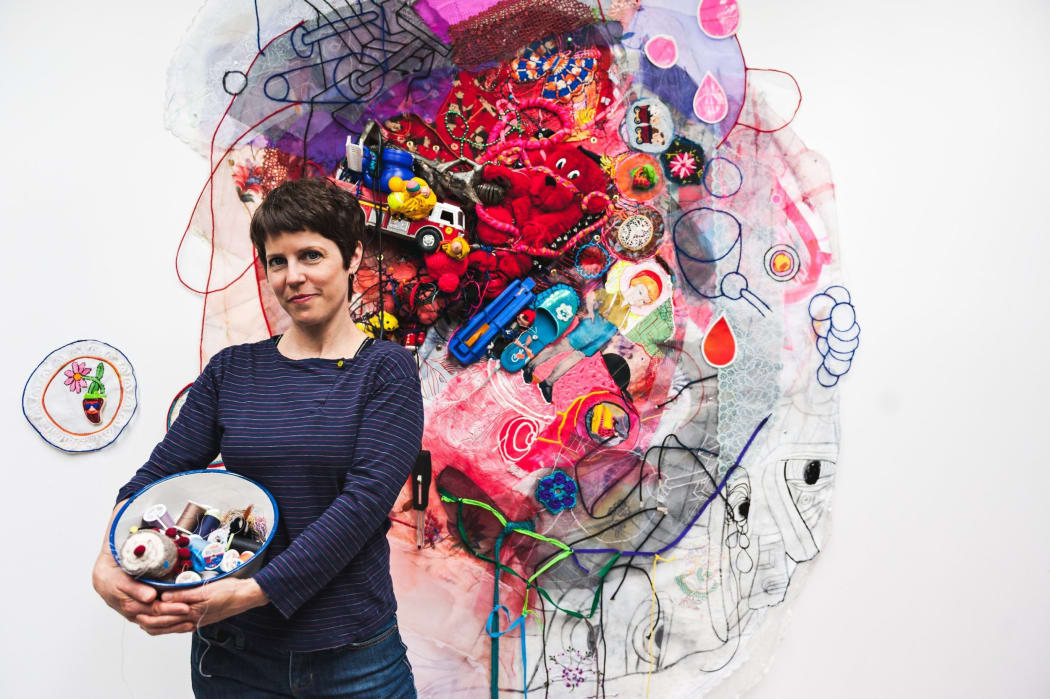 This month, The CAMP Gallery is spotlighting Julie Peppito, an artist based in Brooklyn, NY whose body of work is vast in media, scale, color, and purpose. Her assemblages can be interpreted as childlike curiosity with a punk twist, engaging people of all ages and backgrounds with her paintings, installations, sculptures, and activist work to interrogate the world around us meaningfully.Originally from Tulsa, Oklahoma, Julie's decades-long career has seen her work at venues such as The Long Island Children's Museum, Kentler International Drawing Space, Art in General, and PS122. She's a recipient of the New York Foundation for the Arts Fellowship in Sculpture, has made art for four New York City Park's Department playgrounds, and has been featured in The New York Times and ArtNews as of late. She's also been featured in The CAMP's most recent booths at SPRING/BREAK Art Show NY and SCOPE Art Show Miami Beach.Read below for an exclusive interview with the artist and CAMP founder Melanie Prapopoulos.
This month, The CAMP Gallery is spotlighting Julie Peppito, an artist based in Brooklyn, NY whose body of work is vast in media, scale, color, and purpose. Her assemblages can be interpreted as childlike curiosity with a punk twist, engaging people of all ages and backgrounds with her paintings, installations, sculptures, and activist work to interrogate the world around us meaningfully.Originally from Tulsa, Oklahoma, Julie's decades-long career has seen her work at venues such as The Long Island Children's Museum, Kentler International Drawing Space, Art in General, and PS122. She's a recipient of the New York Foundation for the Arts Fellowship in Sculpture, has made art for four New York City Park's Department playgrounds, and has been featured in The New York Times and ArtNews as of late. She's also been featured in The CAMP's most recent booths at SPRING/BREAK Art Show NY and SCOPE Art Show Miami Beach.Read below for an exclusive interview with the artist and CAMP founder Melanie Prapopoulos. -
CAMP Takes VOLTA
A group interview with Idris Habib, Evelyn Politzer, Silvana Soriano, and Franck de las Mercedes.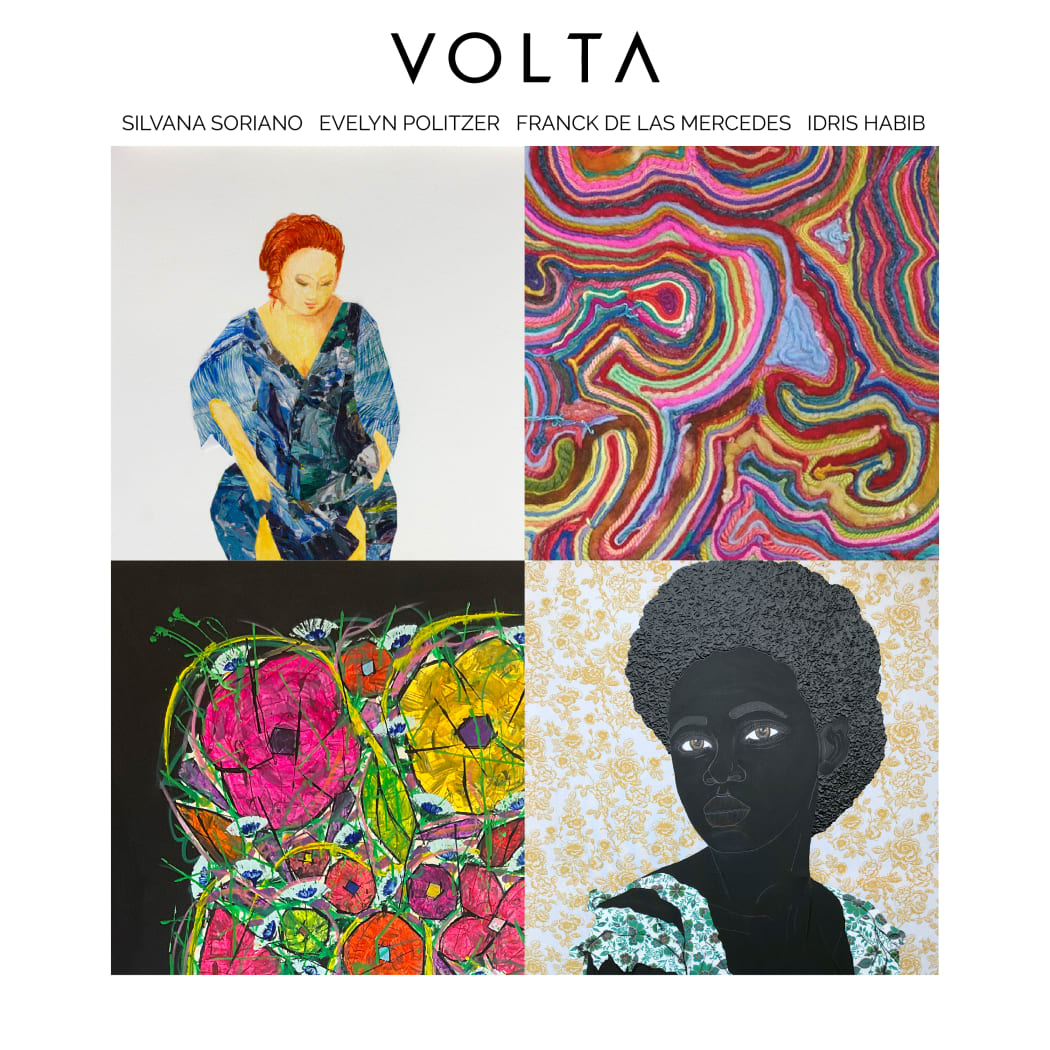
The CAMP’s participation in VOLTA is particularly meaningful considering the way the fair’s ethos aligns with ours—an intentional and accessible relationship with art. Keep reading for a deep dive into Booth 215 with artists Idris Habib, Evelyn Politzer, Silvana Soriano, and Franck de las Mercedes.
-
Who is Joseph Ginsberg to Joseph Ginsberg? An Interview
"The work is the energy. I am solely the tool to make it happen."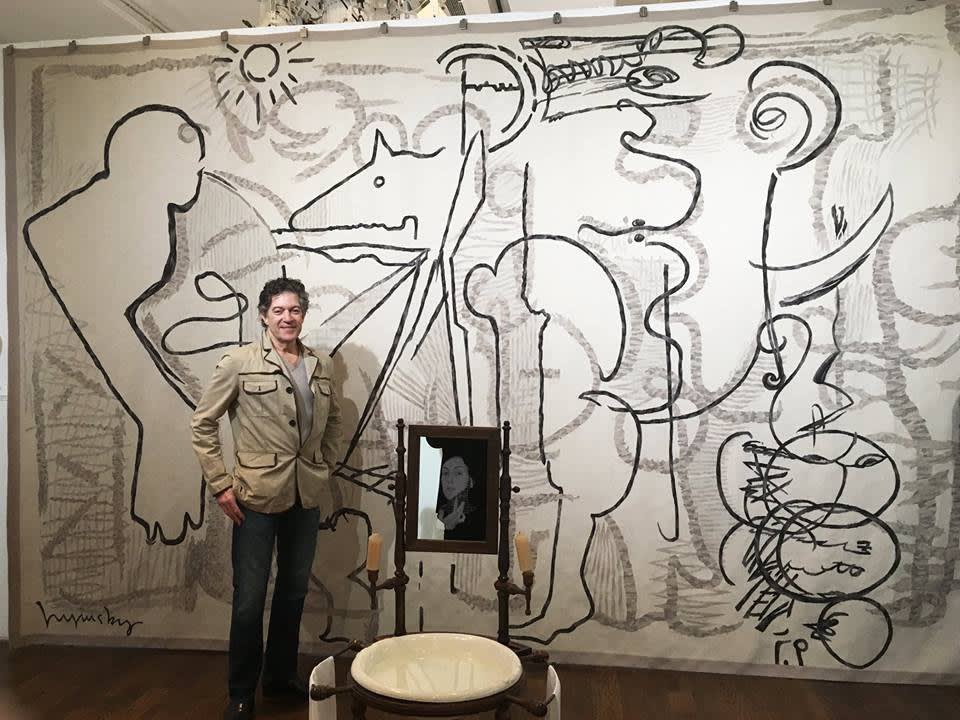
CAMPER Amy Clarke, was fortunate enough to sit down and talk with a man who embodies the truth of what it is to be a creative—native New Yorker, artist, and designer Joseph Ginsberg. Gifted with what seems to be an innate artistic vision, the artist has been dreaming and drawing since he was a child. Fast forward to the present day, and the artist has gathered over 40 years of professional experience the industry from painting or blowing glass in his studio, to designing hotel lobbies from top to bottom. With such a variety of outlets, Amy wanted to talk with Ginsberg himself to find out how which speaks more to him. Who is Joseph Ginsberg to Joseph Ginsberg?
-
Como la cigarra: An Interview with Clara Fialho
Fialho discusses Jungian constructs, the power of cicadas, and how not having a babysitter was life-changing. Clara Fialho in her studio" Clara Fialho ©
Clara Fialho in her studio" Clara Fialho ©"I like it when people come up to me and tell me that that my work has brought them joy, or that it’s given them goosebumps. It means I must be doing something right, but then again, it is beyond my control. I can only hope that they will take something away from it."
-
Moving Parts: An Interview with Laetitia Adam-Rabel
"While I do pray to God, I am a little burnt on what male leadership has brought us to. So I feel it’s time to revere the female and the male alike."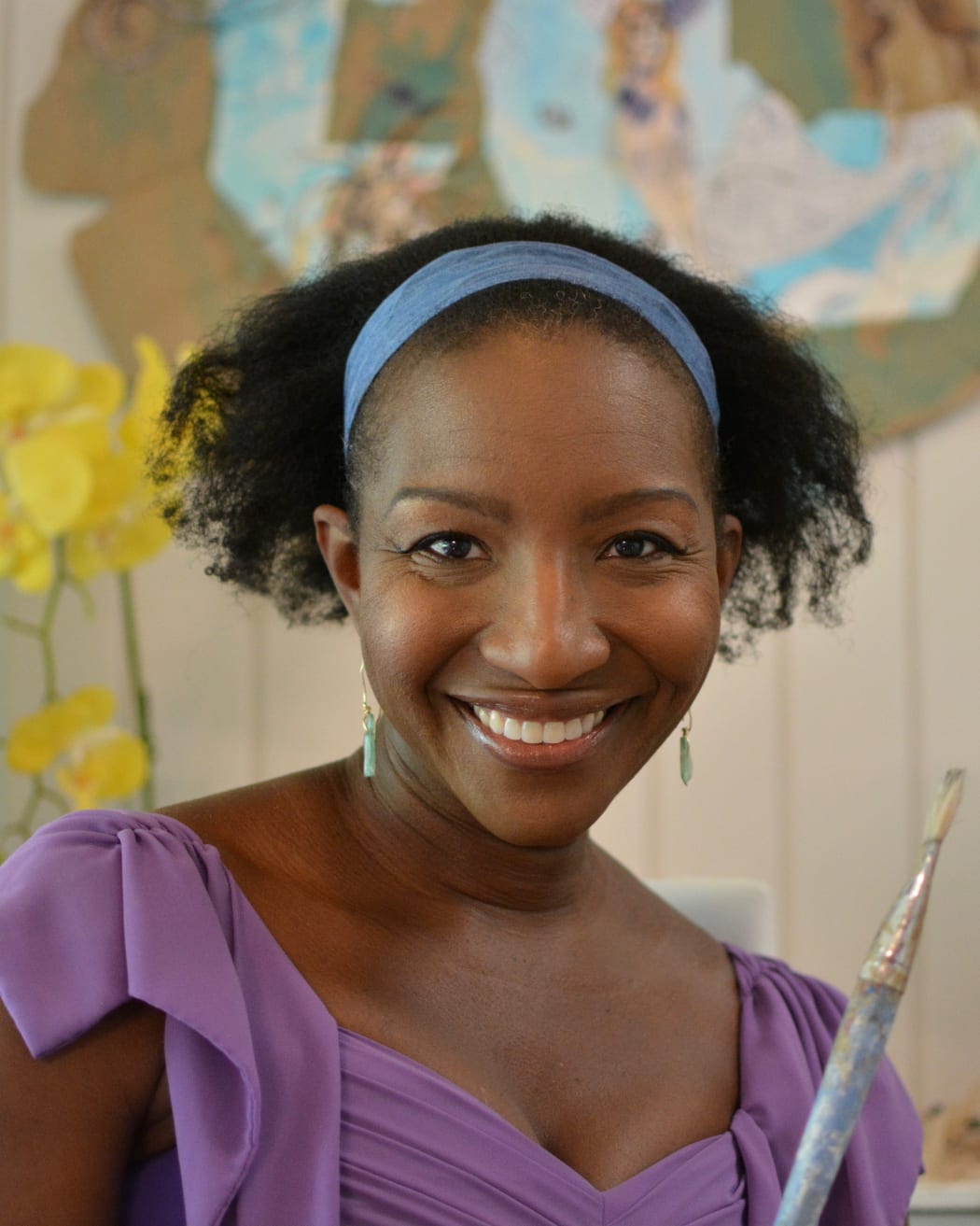 Laetitia Adam-Rabel. Courtesy of the artist.
Laetitia Adam-Rabel. Courtesy of the artist. -
In Conversation with the Women Pulling at the Threads of Social Discourse
Laetitia Adam-Rabel, Viviana Romero, Sandra Onetti, Maria Lino, Leslie McKinley, Laura Marsh, and Nancy Billings reflect on fiber artistry and their purpose as creatives.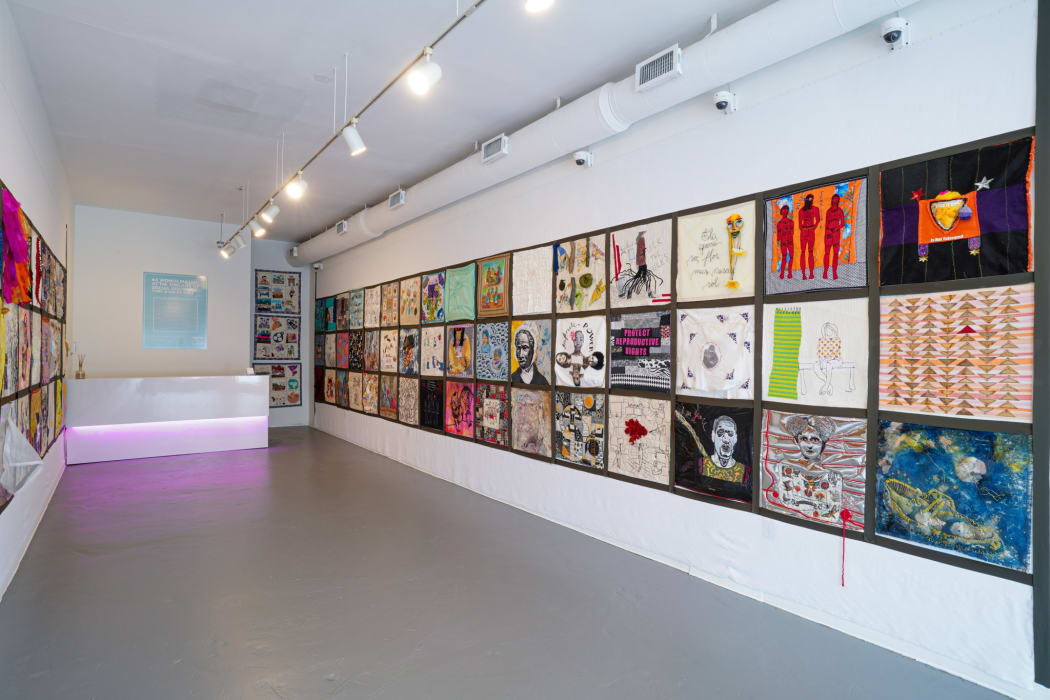
As we continue our third-annual collaboration with Fiber Artists Miami Association, the exhibition, Women Pulling at the Threads of Social Discourse, continues to reveal just how layered the original premise is at its core. If there's anything we've learned over the years, it's that fiber's adaptable quality extends beyond its material capabilites. The idea that textile art holds a dual nature in its capacity to be equally tender and jarring brings about necessary, albeit poignant, questions of its role within the context of "fine" art, as well as just how much validity our societies are willing to afford to the feminine experience.
This year's edition, which features 100 pieces displayed as massive quilt, can be explored from perspectives totaling to the same, whether they're present subconsciously or explicitly. What is certain and unquestionable is that the democratization of the fine art industry allows us, the audience, to interrogate ourselves better, and more deeply, than a run-of-the mill homogeneity allows. Whether one feels uncomfortable, affrimed, or like they've learned something they weren't expecting to, what unites both the artists and the audience is the idea that self-expression isn't something personal, and instead something that is more often than not done in the same of unity.
In typical CAMP fashion, we're interested in what the artists have to say—about their relationship with textiles, whether fiber art and fine art are as mutually exclusive as we've been lead to believe, and about their nature as artists. Read on to get to know Laetitia Adam-Rabel, Natalia Schonowski, Viviana Romero, Sandra Onetti, Maria Lino, Leslie McKinley, Laura Marsh, and Nancy Billings.